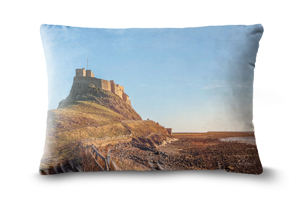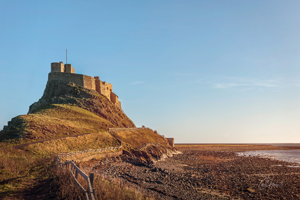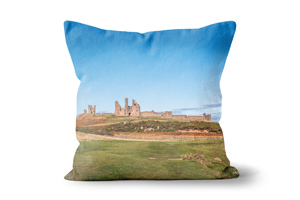


Lindisfarne Castle Cushions
Original Lindisfarne Castle cushions - offering a blend of comfort and individuality that sets your home apart
Check out these features:
- Material Variety: Both hard-wearing, choose from soft faux suede or linen for a tailored feel.
- Double the Elegance: Opt for single-sided or double-sided options to suit your aesthetic preferences.
- Effortless Maintenance: Designed for real-life living, the cover is conveniently washable at 30°.
- Chic Backing: Linen single-print cushions feature a standard white backing and zipper, while the faux suede cushions showcase a stylish stone-colored backing and zipper.
- Vivid Imagery: The Lindisfarne Castle image boasts vibrant colors, thanks to the sophisticated dye sublimation print process - no fading, just enduring charm regardless of the fabric chosen.
- Plushy Comfort: Dive into the comfy zone with a generously filled 100% polyester fibre insert - it's like a hug from your couch.
Transform your space with this exclusive scatter cushion - the perfect fusion of comfort, distinctive style, and durability. Whether you're looking for Lindisfarne Castle scatter cushions, sofa cushions or accent pillows for the bedroom, this handcrafted, washable wonder will do the job perfectly!
Early morning at Lindisfarne Castle on Holy Island, Northumberland (commonly referred to as just 'Lindisfarne').
On a high outcrop of basalt and visible from miles around, it is not really a castle, but a 20th-century restoration of a Tudor fort created as a holiday home in 1902-3 for Edward Hudson, founder of Country Life magazine.
The first part of the fort to be built was an earthen bulwark, but it wasn't until the reign of Elizabeth I between 1565-1571 that proper defences were built in stone, using material from the ruins of nearby St Cuthbert's Priory. Lindisfarne Castle saw action only once, in 1715, when it was seized by supporters of James Stuart, the Old Pretender, although it was soon surrendered to government forces.
Holy Island itself is a tidal island joined to the mainland by a long causeway which is only accessible at low tide.
To reduce the load on mobile data the image has been uploaded at a reduced dpi, which may affect how some detail is displayed. All images are printed at 300dpi or higher. Depending on the calibration of your screen, image colours and brightness may appear less vibrant than the actual print.



